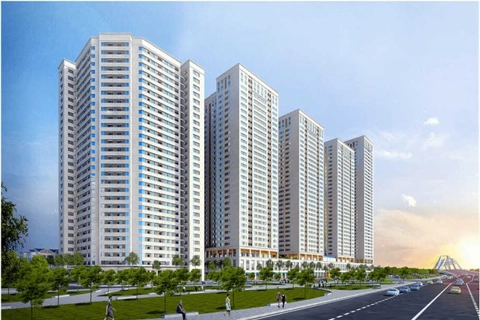Property
Investors are finding value in obsolete buildings: JLL
Sep 30, 2019 / 05:05 AM
The most suitable buildings for adaptive reuse are those which are well-positioned, even if the site is not suited to the current use.
In an increasingly tight real estate market, more and more investors are finding value in adapting obsolete buildings in Vietnam's metropolises.
The pace of technological and social change around the world means more and more buildings are becoming obsolescent as consumer need and demand shift.
In between the glossy new developments and protected historic buildings, there are many older, redundant buildings. Thoughtful reuse of these moribund assets offers a way for investors to enter the market and add value, says JLL Head of Asia Pacific Research Megan Walters. “Obsolescent buildings might be wrong for their current use, but might also be adaptable to something more suitable,” she says.
Thanks to its past, Vietnam’s big cities are filled with historic buildings and tiny alleyways that lead to tinier alleyways. While the older generation used to line up for an opportunity to secure street-front real estate for retail purposes, young people are more into low-key properties. Both Hanoi and Ho Chi Minh City (HCMC) are seeing a resurgence of historic buildings that would have been replaced by more modern properties by now, if not for the millennials.
The focus on the old is not new. Long-standing apartment buildings and mansions on main streets like Ton That Thiep and Nguyen Hue in HCMC has been enjoying steady traffic for many years thanks to charming coffee stores, cool bars and hip clothing brands.
Hanoi, on the other hand, has always been famous for its Old Quarters, where the past and present meet to bring about great business. Where used to be shops of artisans and traders is now also home to concept stores, hostels and restaurants, bustling with tourists and youngsters.
Non-retail businesses are not staying out of the retro wave. Toong is known for transforming many old, underutilized buildings into contemporary co-working spaces, bringing modernity and tradition into the workplace. Forgotten properties around the city are now busy again thanks to the presence of start-up companies with a young and hip workforce. But not any old buildings can be resurrected successfully.
“The most suitable buildings for adaptive reuse are those which are well-positioned, even if the site is not suited to the current use. Finding assets with ‘good bones’ and a layout which can be easily adapted to new use is also important,” says Walters. “City authorities are likely to be amenable to plans which bring life, people and employment back to a building or a district.”
Safety should also be a major consideration for businesses considering this type of property. Many historic properties are in various stages of disrepair and suffer from pest, mold and damp walls. The absence of building management board and any fire safety regulations put these properties at great risk. Cautions should be taken before investing, make sure you are aware of not just the advantages but also the issues of the buildings.
Regardless, the trend here to stay, for both retail and non-retail businesses. Investors prepared to think creatively can acquire such buildings while the price is still reasonable.
The pace of technological and social change around the world means more and more buildings are becoming obsolescent as consumer need and demand shift.

An old apartment building in central HCMC has been converted into a commerical building.
|
Thanks to its past, Vietnam’s big cities are filled with historic buildings and tiny alleyways that lead to tinier alleyways. While the older generation used to line up for an opportunity to secure street-front real estate for retail purposes, young people are more into low-key properties. Both Hanoi and Ho Chi Minh City (HCMC) are seeing a resurgence of historic buildings that would have been replaced by more modern properties by now, if not for the millennials.
The focus on the old is not new. Long-standing apartment buildings and mansions on main streets like Ton That Thiep and Nguyen Hue in HCMC has been enjoying steady traffic for many years thanks to charming coffee stores, cool bars and hip clothing brands.
Hanoi, on the other hand, has always been famous for its Old Quarters, where the past and present meet to bring about great business. Where used to be shops of artisans and traders is now also home to concept stores, hostels and restaurants, bustling with tourists and youngsters.
Non-retail businesses are not staying out of the retro wave. Toong is known for transforming many old, underutilized buildings into contemporary co-working spaces, bringing modernity and tradition into the workplace. Forgotten properties around the city are now busy again thanks to the presence of start-up companies with a young and hip workforce. But not any old buildings can be resurrected successfully.
“The most suitable buildings for adaptive reuse are those which are well-positioned, even if the site is not suited to the current use. Finding assets with ‘good bones’ and a layout which can be easily adapted to new use is also important,” says Walters. “City authorities are likely to be amenable to plans which bring life, people and employment back to a building or a district.”
Safety should also be a major consideration for businesses considering this type of property. Many historic properties are in various stages of disrepair and suffer from pest, mold and damp walls. The absence of building management board and any fire safety regulations put these properties at great risk. Cautions should be taken before investing, make sure you are aware of not just the advantages but also the issues of the buildings.
Regardless, the trend here to stay, for both retail and non-retail businesses. Investors prepared to think creatively can acquire such buildings while the price is still reasonable.








